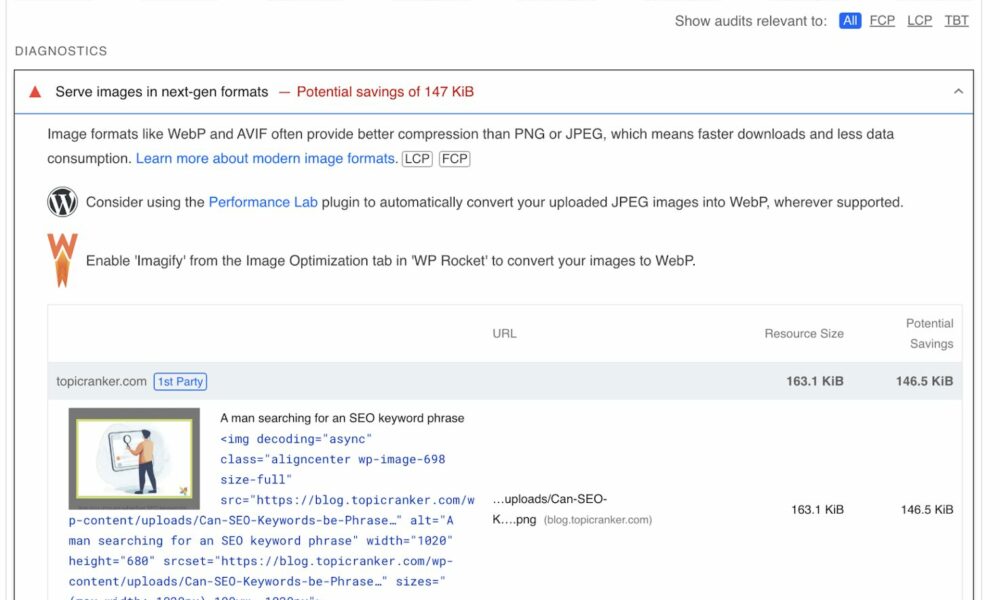In 2025, SEO continues to be a vital aspect of any business’s online strategy. With evolving algorithms like Google’s August 2024 core update, businesses must adopt efficient strategies to remain competitive in the digital space. By focusing on quality content, user experience, and the latest SEO trends, companies can enhance their visibility and drive more traffic to their websites. Here are some simple yet highly effective strategies that businesses should consider for their SEO efforts in 2025.
Understanding Google’s Latest Algorithm Update
The Impact of the August 2024 Core Update
Google’s August 2024 core update emphasized the importance of content that offers genuine value and relevance. This change marks a shift away from rewarding content that is purely optimized for SEO and focuses on user-centric content. Businesses need to ensure that their websites provide meaningful, high-quality information to meet users’ needs, as opposed to just focusing on keyword density or SEO tactics.
With this update, outdated content is more likely to lose its ranking. As a result, businesses must frequently review and refresh their website content. Updating existing pages to reflect current trends and addressing gaps in the information can help maintain or improve rankings in the wake of algorithm changes. Staying proactive will ensure websites remain relevant in search engine results pages (SERPs).
The Importance of High-Quality Content
Quality content remains king in 2025. Google continues to prioritize content that answers search queries effectively. For businesses, this means not only answering the questions that users have but providing the most in-depth and relevant information available. High-quality content builds trust with both search engines and users, enhancing overall rankings.
To stand out, businesses should focus on identifying gaps in existing search results and creating better, more comprehensive content than competitors. Content that is updated regularly, aligned with searcher intent, and detailed in scope will outshine competitors’ pages, especially if the competition features outdated or low-value material. High-quality content must be prioritized to meet Google’s evolving expectations.
In this article we are going to go over the four simple SEO tactics and strategies we use to utilize the changes in August Core Update to help us rank higher on Google search results.
These tactics are Google approved and go hand in hand with the latest changes and recommendations from the latest August 2024 Google core algorithm update. Ready? Let’s roll.
-
Optimizing User Experience with Core Web Vitals
Page Speed Optimization
Page speed is a crucial component of SEO success, especially with Google’s focus on Core Web Vitals. A slow website not only frustrates users but also negatively impacts rankings. With more users browsing on mobile devices, it’s essential for businesses to ensure their site loads quickly on all platforms. Slow-loading pages lead to higher bounce rates, which can reduce your visibility in SERPs.
By using tools like Google PageSpeed Insights, businesses can assess and optimize their site’s performance. Reducing the time it takes for a page to load can increase user satisfaction, engagement, and rankings. In 2025, fast and responsive websites will be essential for success in search.
Google PageSpeed Insights not only gives you your scores but also specific items to improve on your page to score better so that the page loads faster. Take a look at this example report below, you can share this directly with your development team to make changes on the page.
Improving Visual Stability and Responsiveness
Another critical factor for SEO in 2025 is visual stability, which ensures that elements on a page load predictably and don’t shift unexpectedly. This is particularly important for mobile users, who might be frustrated by unstable elements. Reducing layout shifts improves user experience and reduces bounce rates, signaling to Google that your page provides a positive experience.
Additionally, websites must be responsive across various devices. With Google’s mobile-first indexing, ensuring that content appears correctly on all screen sizes is non-negotiable. A responsive site provides a seamless experience, boosts rankings, and encourages users to stay longer on your site, leading to better engagement metrics.
-
Leverage Structured Data for Better Search Visibility
What Is Schema Markup?
Structured data, such as schema markup, helps search engines understand your content better, enhancing the chance of appearing in rich results like featured snippets and knowledge panels. It allows you to provide more context to search engines about your pages, which can be displayed directly in search results, making your site more attractive to potential visitors.
In 2025, businesses that implement structured data are likely to see increased visibility and clicks. By making it easier for Google to parse and present your information, structured data allows your content to stand out in competitive markets, leading to higher engagement and traffic.
- Target Long-Tail Keywords to Improve Ranking
Why Long-Tail Keywords Matter
Long-tail keywords, which are more specific and often less competitive than general terms, offer a strategic advantage for businesses looking to improve rankings in 2025. These keywords typically have lower search volume and lower competition but higher intent, meaning that users who search for these terms are more likely to convert. By targeting long-tail keywords, businesses can reach niche audiences without competing against larger brands.
In 2025, long-tail keywords will remain a vital part of any SEO strategy. They allow businesses to focus on high-intent users searching for very specific information, making it easier to rank in SERPs without the need for significant domain authority or backlinks. Incorporating long-tail keywords into content strategies is a practical way for smaller businesses to stay competitive.
Gaetano DiNardi recently posted a great post on LinkedIn outlining why going after long tail keywords is the most effective strategy right now, he and Bernard Huang of Clearscope call it “ranch style SEO”.
Because SEO has gotten so ridiculously competitive, that the skyscraper method only works for very established brands with strong domains. Smaller companies who attempt the skyscraper technique end up getting “stuck” in ranking positions 11-50. ie. buried on page 2 of the Google rankings, never to be found or seen. Small brands and startups lack authority. AND, they are unable to build enough backlinks to catch up with competitors who have already established themselves for years in advance. That’s why covering the field with long-tail “Ranch SEO” pages are more likely to drive rankings and traffic.
Tips for Effective Keyword Targeting
To maximize the impact of long-tail keywords, businesses should use keyword research tools to identify terms that align with their audience’s intent. Creating content around these specific keywords helps target users more effectively. Additionally, crafting titles, meta descriptions, and headlines that align with long-tail searches will increase the chances of appearing in relevant search results.
By ensuring that these elements closely match the search intent behind long-tail keywords, businesses can improve their chances of ranking higher in search results. Tools like Mangools KWFinder can help identify the right keywords by showing the target keyword on the left and the search engine results page on the right highlighting how competitive or difficult to rank it would be for you to get to top 3 spots on Google.
Mangools KWFinder shows you the usual domain authority, page authority, keyword difficulty metrics, but it also goes a step beyond allowing you to analyze the SERP by adding your own domain to the SERP and seeing how you compare to the competition and how easily you can rank for this keyword. The tool takes into account and reports:
- SERP features impact – the chance that Google’s generative AI answer, or other info boxes will take over the SERP result and you won’t have a chance to rank in top spots.
- CTR rate – what would be a typical click through rate if you were to rank #1 on this search results
- Visibility of organic results above the fold – how likely are you to actually show up above the fold on the Google search results
Tools like these don’t just show you the search volume of a keyword and it’s difficulty but they allow businesses to focus on keywords that offer the best opportunity for visibility. As businesses craft targeted content, aligning with long-tail keyword searches, they will naturally see an increase in relevant traffic. This approach ultimately leads to more effective content marketing efforts.

When writing content for long-tail keywords, businesses should focus on fully addressing the searcher’s intent. The content should be in-depth and provide value that competitors may lack. This approach will help businesses not only attract traffic but also establish themselves as authorities in niche markets.
How Structured Data Improves Ranking
Structured data does more than just enhance visibility—it also improves your site’s overall ranking. By adding schema markup, businesses ensure that their content is better understood and more relevant to search engine algorithms. This makes it easier for pages to rank in voice search, featured snippets, and AI-generated summaries, all of which are growing in importance.
As voice search and AI-generated content become more prevalent, having structured data ensures your site is equipped to meet these emerging demands. Businesses, including those working with a white label SEO provider, can leverage schema markup to enhance search engine understanding, resulting in better positioning for modern search formats. By focusing on structured data, companies improve not just their visibility but also their competitiveness in a rapidly evolving digital landscape. This strategic use of markup plays a key role in future-proofing SEO efforts.
By implementing structured data, businesses can differentiate themselves in a crowded digital space. As search engines become more sophisticated, schema markup will be a crucial tool for maintaining a competitive edge and improving search rankings in 2025.
-
Harness AI-Driven SEO Insights
Understanding AI Search Engines
AI-driven search engines, like Google’s AI-generated overviews, are increasingly shaping the future of search. These AI features summarize search results, often answering users’ questions before they need to click on any results. Businesses must adapt to this change by creating content that is optimized for both traditional search and AI-powered results.
Remember each AI-generated answer in Google search result relies on a few articles, Google actually shows which articles it used to come up with the answer to the right, take a look here:

Your job is to analyze these articles and try to create something more up to date and better, more thorough, more examples, more comparisons. Once you create the article you need to do some PR around it, get that article linked and referenced in different places on the web.
When you create a unique and better written piece of content which is references and shared on the web Google’s generative AI will start to incorporate it into it’s answers.
In 2025, understanding how AI impacts search is crucial for success. SEO strategies must evolve to account for AI’s ability to interpret and prioritize concise, clear, and valuable content. By focusing on providing direct answers and structuring content to suit AI-driven searches, businesses can improve their visibility in this new search paradigm.
How AI Impacts Search Results
AI is transforming how search engines rank content, making it essential for businesses to focus on clarity, precision, and relevance. With AI-driven results often providing answers instantly, businesses should ensure their content is optimized for featured snippets and voice search. Offering detailed, easy-to-digest information helps content rank higher in AI-powered searches.
As AI continues to play a more significant role in search, businesses that adapt their SEO strategies to include AI-driven insights will have an edge over competitors. By staying ahead of AI trends and focusing on user needs, companies can secure strong rankings and increase traffic in 2025.
Conclusion
In 2025, SEO will remain a crucial component of digital marketing, and businesses must adapt to the evolving landscape shaped by algorithm updates, AI advancements, and user experience optimization. By focusing on high-quality content, improving site performance through Core Web Vitals, leveraging structured data, targeting long-tail keywords, and embracing AI-driven insights, companies can stay ahead of the competition. Implementing these strategies will not only improve visibility in search results but also enhance user engagement, helping businesses grow in the ever-changing digital world.






